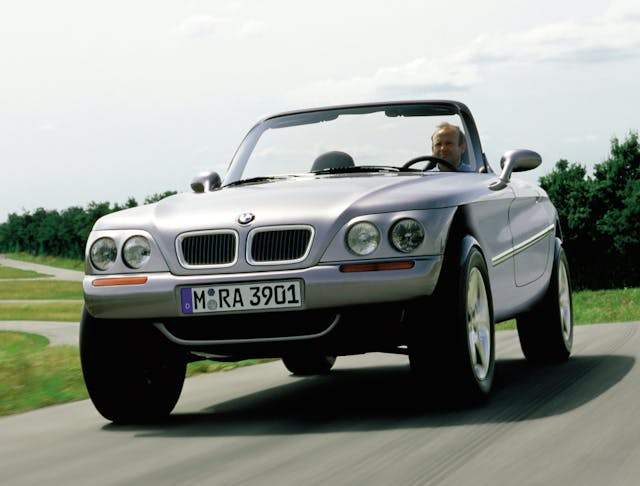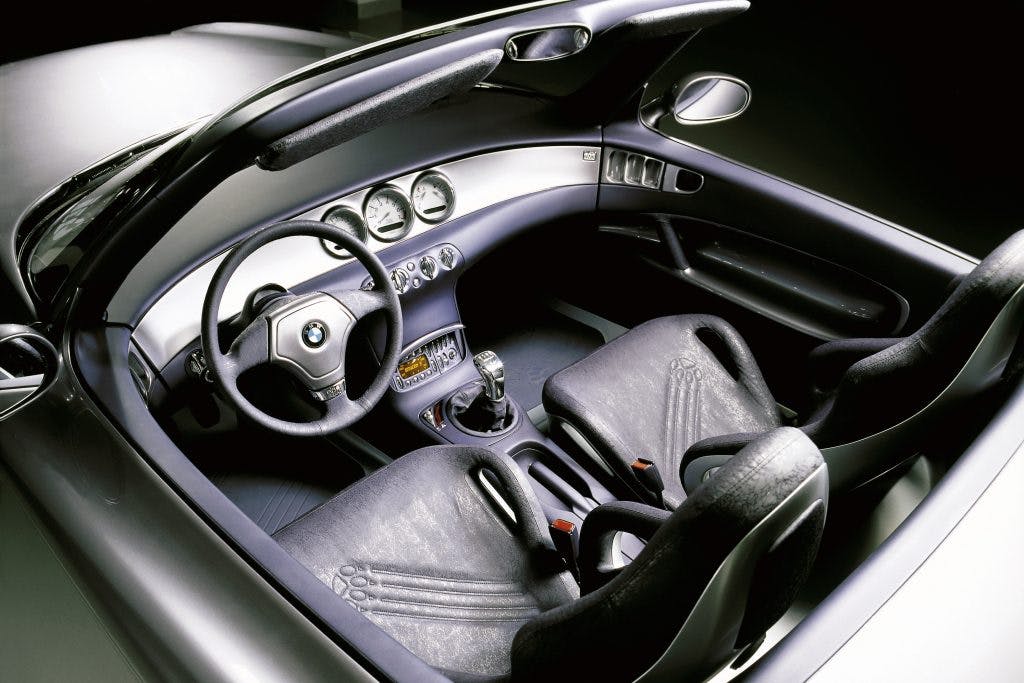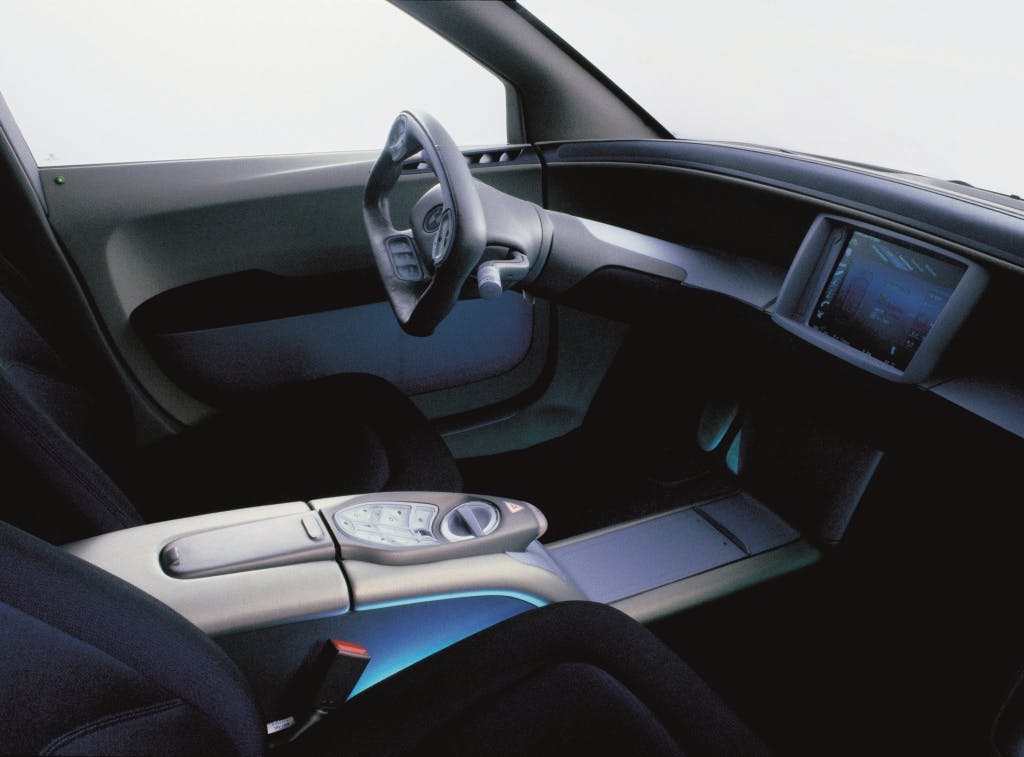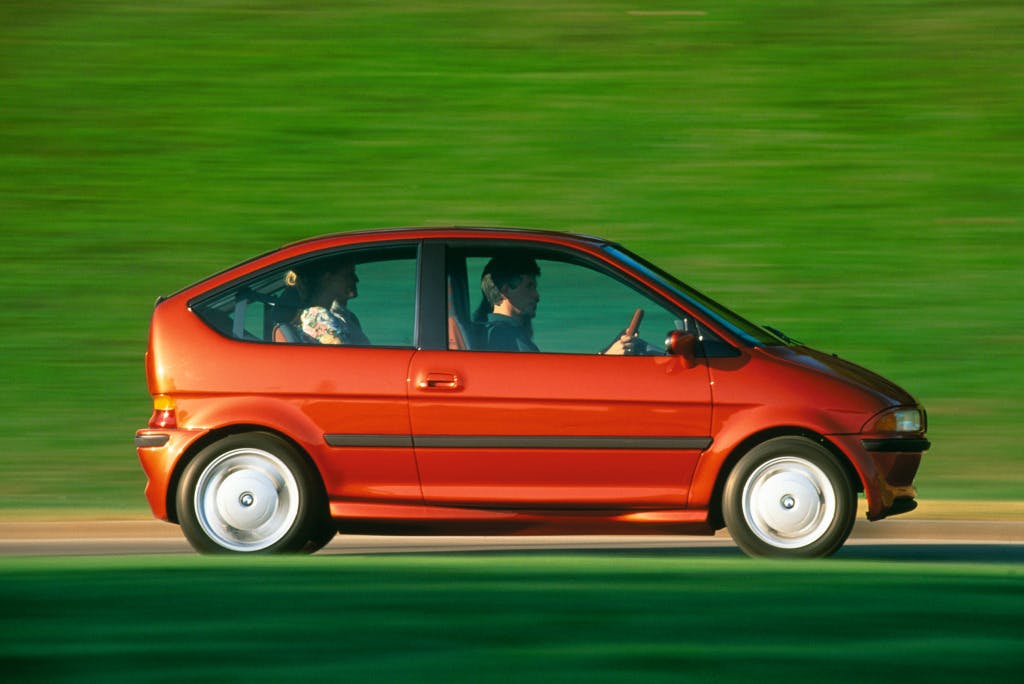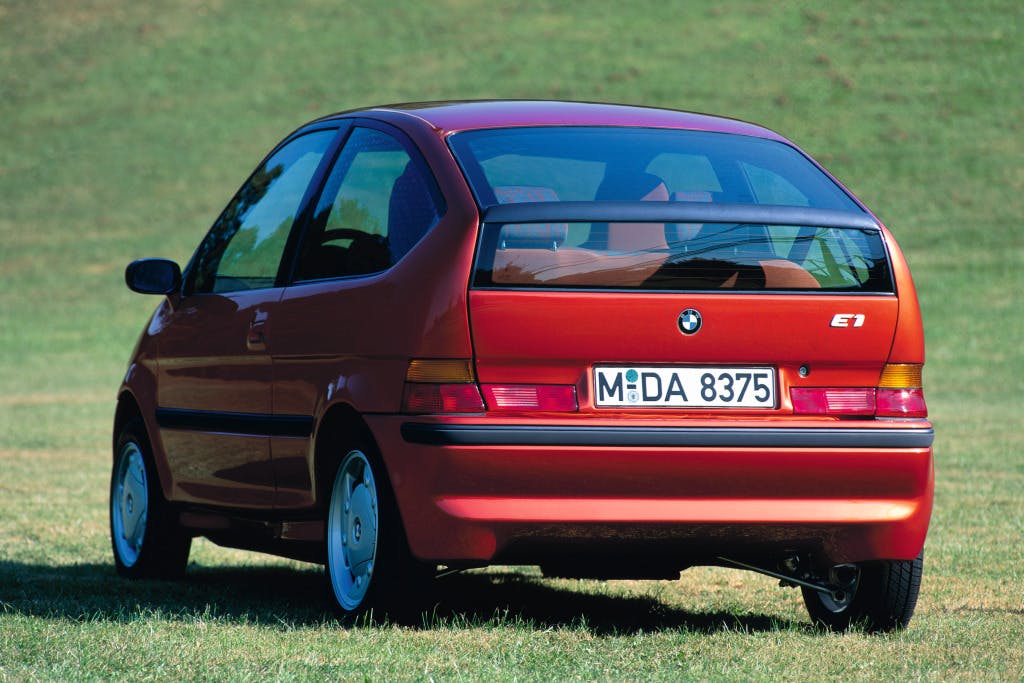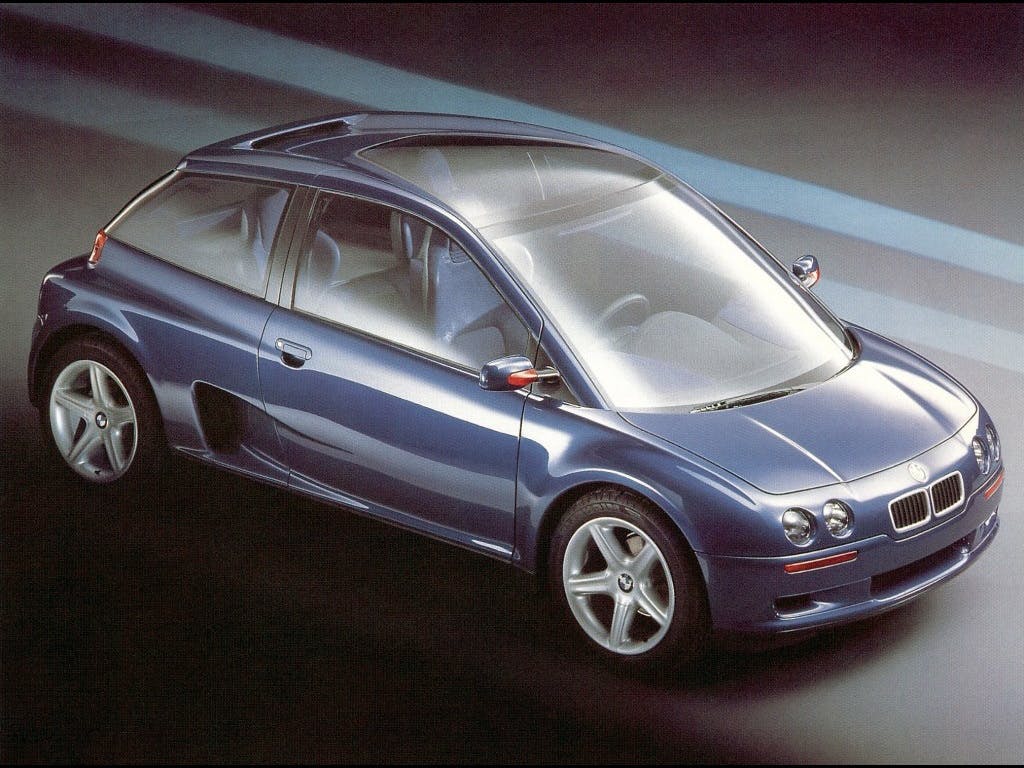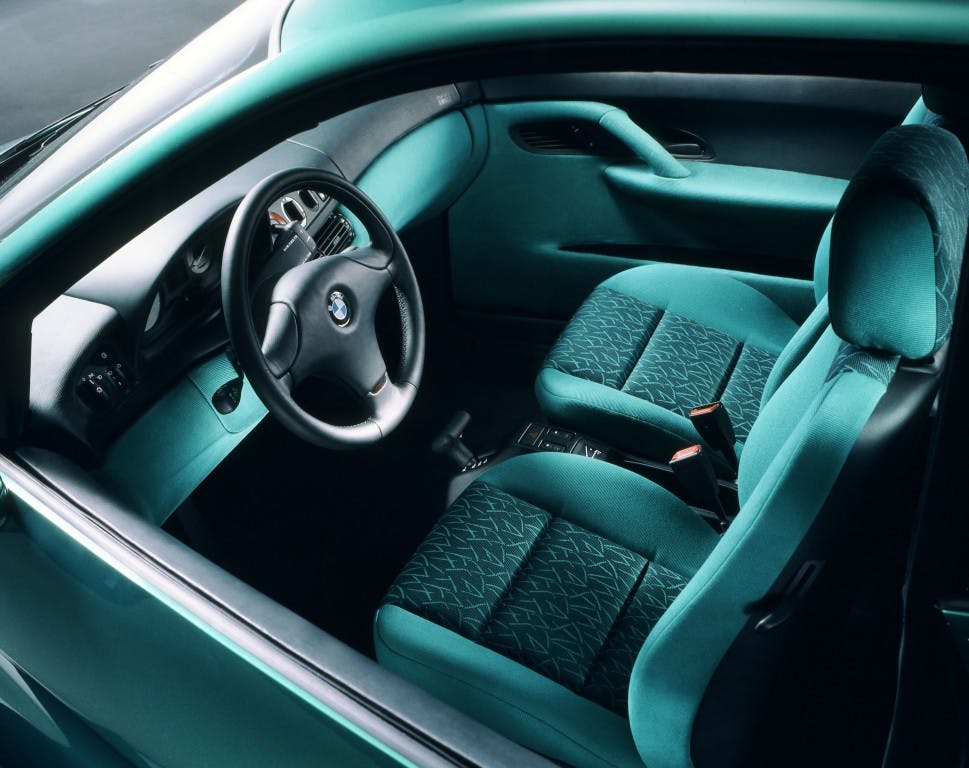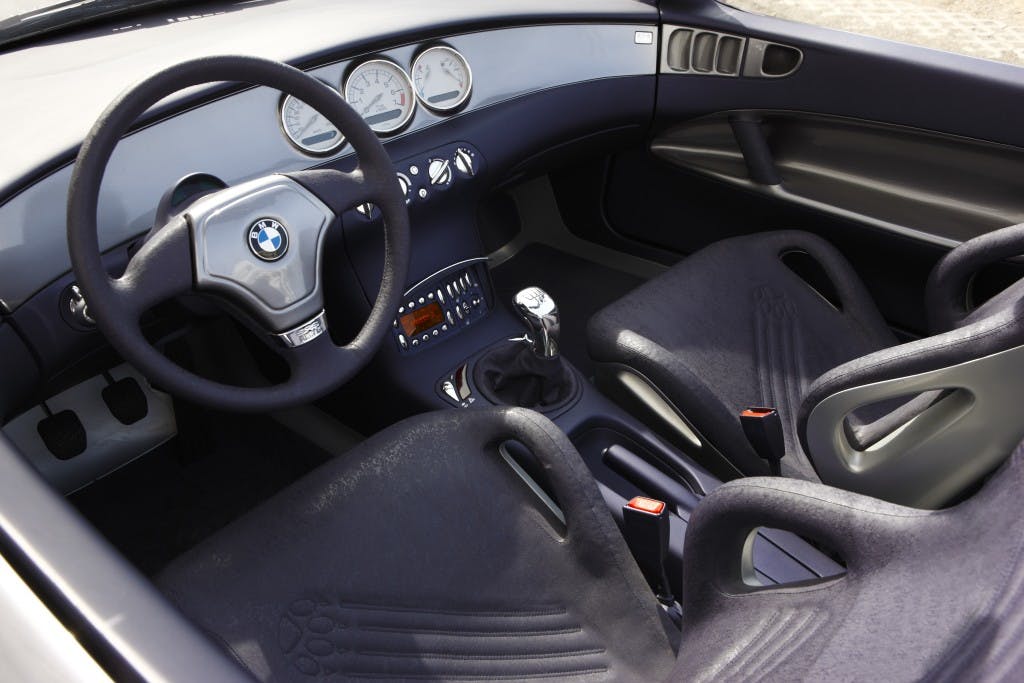Media | Articles
These 7 BMW ’90s concepts would have shaped segments anew
BMW’s range was remarkably straightforward during the 1990s. It consisted of the 3 series, the 5 series, the 7 series, the 8 series, the Z series, and the X5 that came at the very end of the decade.
Much crazier projects, some of which bordered on automotive alchemy, were brewing behind the scenes. These highly specialized experiments were cooked up the Technik division, which BMW founded in 1985 to develop forward-thinking vehicles like Z1. Technik created roadsters powered by motorcycle engines, futuristic sedans with oddball styling, and even electric hatchbacks that long predated any kind of related zero-emissions mandate.
As the new M3 continues to polarize enthusiasts, we’re taking a look at some of BMW’s craziest projects to keep it all in perspective.
1998 BMW Z1 Coupe

BMW only showed us the tip of the Z1 iceberg. It released the model in 1989 as a rear-wheel-drive convertible with trick sliding doors, but it also considered making a four-wheel-drive variant (Z1x?) and a coupe that undoubtedly would have caused a stir. The basic platform was engineered with these versions in mind.
Unlike most of the concepts in this story, the Z1 Coupe never made it beyond the model stage. It’s well-proportioned and attractive, yet stays close to the design ethos that characterized BMWs during the 1980s. However, the Z1 Coupe was not a running, driving prototype that was tested for miles on end, deep within the intestines of a research and development facility.
Marketplace
Buy and sell classics with confidence

Any car that died at the clay model stage it tough to judge, but we love what we see here. The coupe’s front end is more muscular than the Z1’s, the headlight covers are notably absent, and the rear end is a clear precursor to the “clown shoe” Z3/M Coupe.
Stylists displayed a stunning amount of foresight by putting the Z1 Coupe on stilts. There’s an unmistakable off-road vibe to it. Lights are integrated into the mirror caps, and the whole stance is relatively tall thanks in part to off-road tires. There is even a pair of roof rails. What didn’t change for the production Z1 are the doors, which dropped down into the body like as they did for the final convertible.
1991 BMW E1 (Z11)

Launched in 2013, the electric BMW i3 seemingly came out of nowhere. It didn’t handle like a 2 Series, it didn’t accelerate like an M3, and it didn’t offer the off-road capacity of an X5. It shared almost no styling cues with other members of the company’s range, and it was unusual enough to deserve its own “i” sub-brand, shared with the similarly out-there i8.
And yet, it wasn’t without precedent. BMW began experimenting with electric technology when it paraded around the 1972 Munich Olympic Games with a battery-powered 2002, and it unveiled a shockingly i3-esque EV named E1 (Z11) at the 1991 Frankfurt auto show.
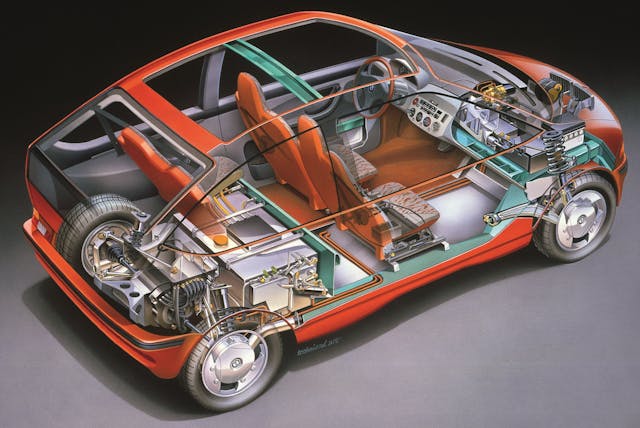
Technik explained that the project’s goal wasn’t mass-production; it was an opportunity to learn more about the pros and cons of building an electric car, made possible by testing one in real-world conditions. Fully functional, the E1 was equipped with a sodium-sulphur battery pack located under the rear bench that zapped a rear-mounted 43-horsepower electric motor into motion. It offered up to 124 miles of driving range (about 43 more than the i3 when it went on sale), but its top speed of approximately 75 mph made driving flat-out on the autobahn a necessity, not a luxury.
Plastic and aluminum helped offset the weight of the electric powertrain. Road testers put the E1 through its paces in Germany and promptly shelved it after they gathered the data they needed. This rather offbeat prototype was a more prescient vision of BMW’s future range than anyone dared imagine in the early 1990s.
1993 BMW Z13
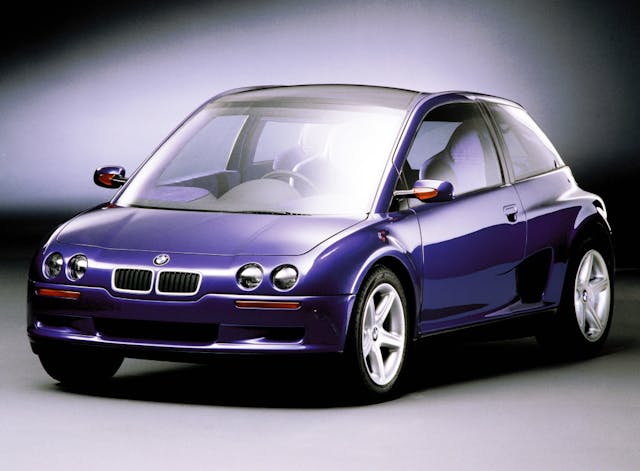
After the E1, BMW hopped to the opposite end of the city car segment by creating the Z13. The project’s guidelines called for a compact vehicle that was safe, innovative, comfortable, and fun to drive. It needed to slot below the E36-generation 3 series, and it had to feel like a BMW. Nothing in the brief declared that it must look like one, however.
Unveiled in 1993, the Z13 landed with almost cartoonish proportions that surrounded an equally atypical interior. The driver sat right in the middle of the cabin, and the area behind the front seat could be used as a trunk that was spacious enough to carry skis. Alternatively, users could fold up a pair of seats to create space for two additional passengers, both of whom enjoyed limousine-like leg room. Basically all of this was completely unheard of in the city car segment.
Innovative? Check. Comfortable? Check? Fun to drive? Hell yes! Aluminum reduced the Z13’s weight to about 1830 pounds, and the vents chiseled into the quarter panel channeled cooling air to an 82-horsepower, 1.1-liter four-cylinder engine normally found between a K1100 rider’s legs. Here, the bike engine was mounted transversely over the rear axle.
Technik went above and beyond by throwing connectivity—which wasn’t a buzzword in the early 1990s—into the equation. Z13 drivers could count on a satellite navigation system to guide them to their destination, and they were able to stay in touch with the outside world by using the in-car phone or the built-in fax machine. Rad.
Had it gone on sale, the Z13 would have stood out as one of the most imaginative models in its segment, and by a wide margin. Whether it was ever seriously considered for production is a mystery, but executives evidently against it. Instead, BMW purchased Rover, which conveniently owned Mini, in 1994.
1993 BMW E1 (Z15)

BMW recycled the E1 nameplate for a second EV, presented in 1993. Called Z15 internally, it arrived as an evolution of its predecessor, wearing a more futuristic exterior design. Its overall proportions, however, changed little. The E1 retained its predecessor’s 2+2 seating configuration and rear-mounted electric motor, though juice was stored in a sodium-nickel-chloride battery pack. BMW quoted a 45-horse output and up to 165 miles of driving range in ideal conditions. The E1 was, as before, primarily for city use, so the hatchback stopped accelerating when it reached 78 mph.
Interestingly, BMW also tested a variant of the Z15 powered by a 1.1-liter four-cylinder engine borrowed from the K1100, and it experimented with a gasoline-electric hybrid model that promised to offer the best of both worlds in exchange for a significant weight penalty. None of these prototypes were seriously considered for mass production.
Technik again hoped to mine valuable data from the project. At the end of the testing phase, it concluded that making a modern electric car was technically feasible, but it warned that significant improvements in battery technology were needed before it could make a favorable business case for one. Work continued behind the scenes.
1995 BMW Z18

BMW’s motorcycle division watched its sales increase as demand for enduro motorcycles ballooned during the 1990s. Not everyone was comfortable with the idea of exploring the outdoors on two wheels, so Technik concocted a concept that aimed to offer the experience of riding a dirt bike with the safety and the predictability of a car.
Called Z18, the design study was pegged at the then-unlikely intersection of convertibles and SUVs. It looked like a roadster from the top of the windshield to the wheel arches, yet it sat higher than most SUVs built during the 1990s. And, while it was recognizable as a member of the BMW range thanks largely to its twin grilles, it inched towards the flame surfacing treatment that Chris Bangle controversially introduced to the lineup in the 2000s.
Developed to drive through water, the Z18 used a plastic body dropped on a steel frame. Users could configure it as a two- or a four-seater, or as a pickup. It was unlike anything else; in a way, it represented an attempt to breathe new life into the beach car segment that faded away during the late 1980s.
Dropping a dirt bike engine in the Z18 wouldn’t have cut it, so Technik used a V-8 plucked out of the BMW parts bin, tuned to deliver 355 horsepower to the four wheels via a five-speed manual transmission. Oddly, the Z18 was created in 1990, but it wasn’t shown to the public until 1995 according to BMW’s archives department.
1995 BMW Just 4/2 (Z21)

Technik again tried bringing the thrill of riding a motorcycle to the car world when it built the Just 4/2, which was introduced at the 1995 edition of the Tokyo auto show. Also called Z21, it put a modern spin on roadsters like the Lotus Seven by offering the driver and one passenger the strict minimum in terms of creature comforts.
Small and nimble, the Just 4/2 explored what the Seven might have looked like during the 1990s had its design continuously evolved. Its headlights were perched above the bumper, its wheels stuck out from the body, and its suspension parts were left bare so that other motorists could admire them. It didn’t have a windshield, so Technik suggested the passengers wear a helmet and protective clothing while traveling in the Just 4/2, like on a motorcycle.
Speaking of, power came from a four-cylinder engine borrowed from the K1100 (notice a pattern?) and tuned to develop 100 horsepower. While that doesn’t sound like much, especially not when you consider an E34 M5 put 315 horsepower under the driver’s right foot, keep in mind that this motorcycle-car cross-thing weighed merely 1200 pounds. It clocked a six-second sprint from zero to 60 mph, BMW remembers, so it was quicker than its specifications sheet suggested.
1999 BMW Z22

BMW bragged that there were at least 70 technical innovations and 61 pioneering inventions stuffed into the Z22 concept it created in 1999. Fully functional and built as a rolling display of technology, the prototype was proudly presented as one of the most advanced cars ever developed by the Technik division. Many of the advancements it showcased are features that motorists take for granted in 2021, but they were cutting-edge in 1999.
It used steer- and brake-by-wire technology, for example, while a head-up display put vital information about the car and its surroundings directly in the driver’s line of sight. Cameras replaced the door mirrors, they transferred their footage to a screen mounted above the windshield, and a second screen embedded in the middle of a minimalist dashboard replaced most of the knobs, buttons, and dials normally found on a car’s center console. Sound familiar?

Stripping the dashboard of all commands was unusual, but its design—deep and curved—was even more surprising. Keep in mind this was in 1999, when BMWs were still known for their driver-focused center consoles. And, years before the first iPhone, the Z22 was equipped with a fingerprint scanner that replaced the ignition key.
Then and now, BMW wasn’t afraid to split the public’s opinion with a controversial design. Wearing a quirky two-box design, the Z22 was about as long as an E46-generation 3 Series, but it rode on the wheelbase of a 7 series. Carbon-fiber-reinforced plastic helped keep the vehicle’s weight in check, and some of the lessons BMW learned in this department bore fruit in the carbon-structured i3 and i8 released in the 2010s. Electrification wasn’t on the menu, however. Technik fitted the Z22 with a 136-horsepower four-cylinder engine bolted to a continuously variable transmission (CVT).

